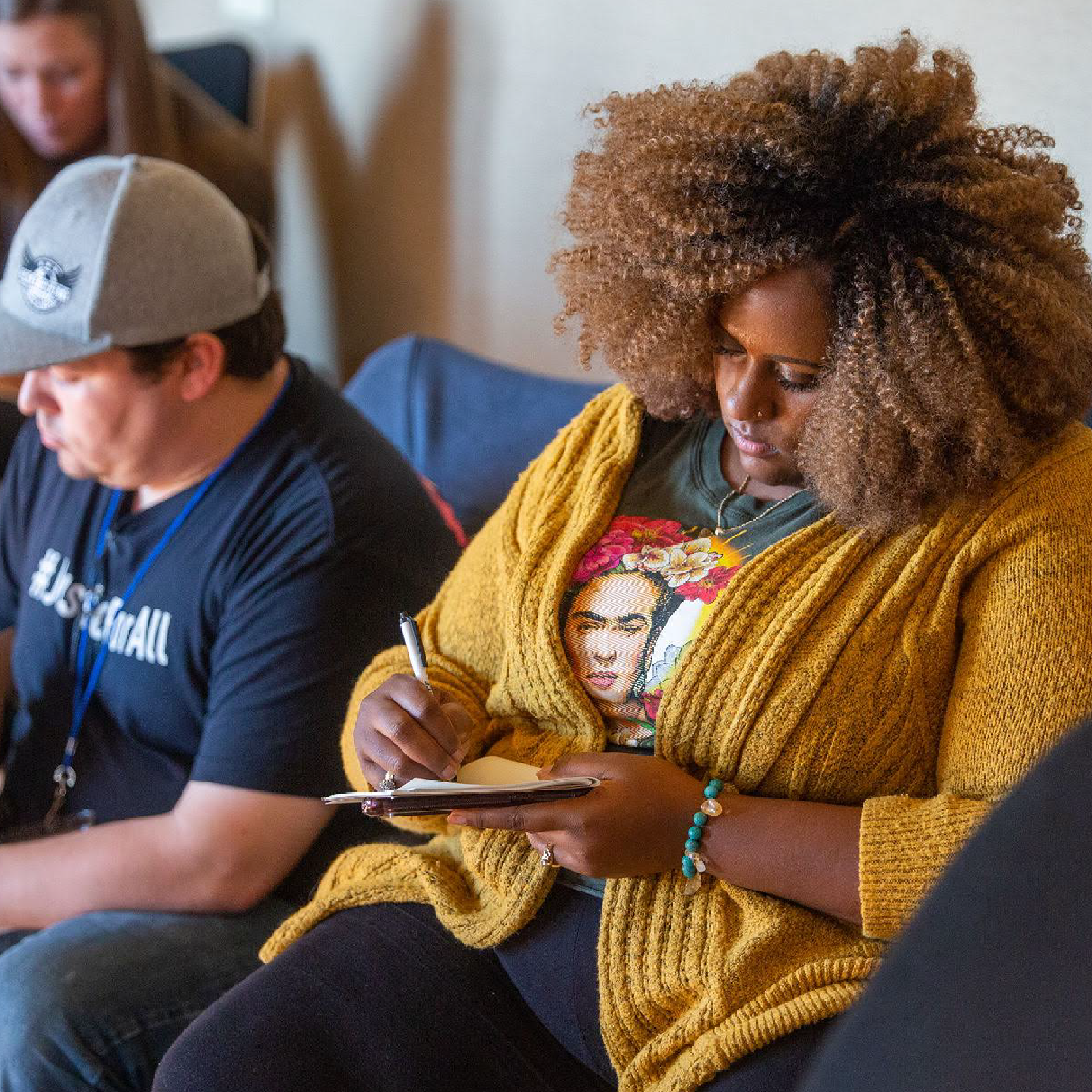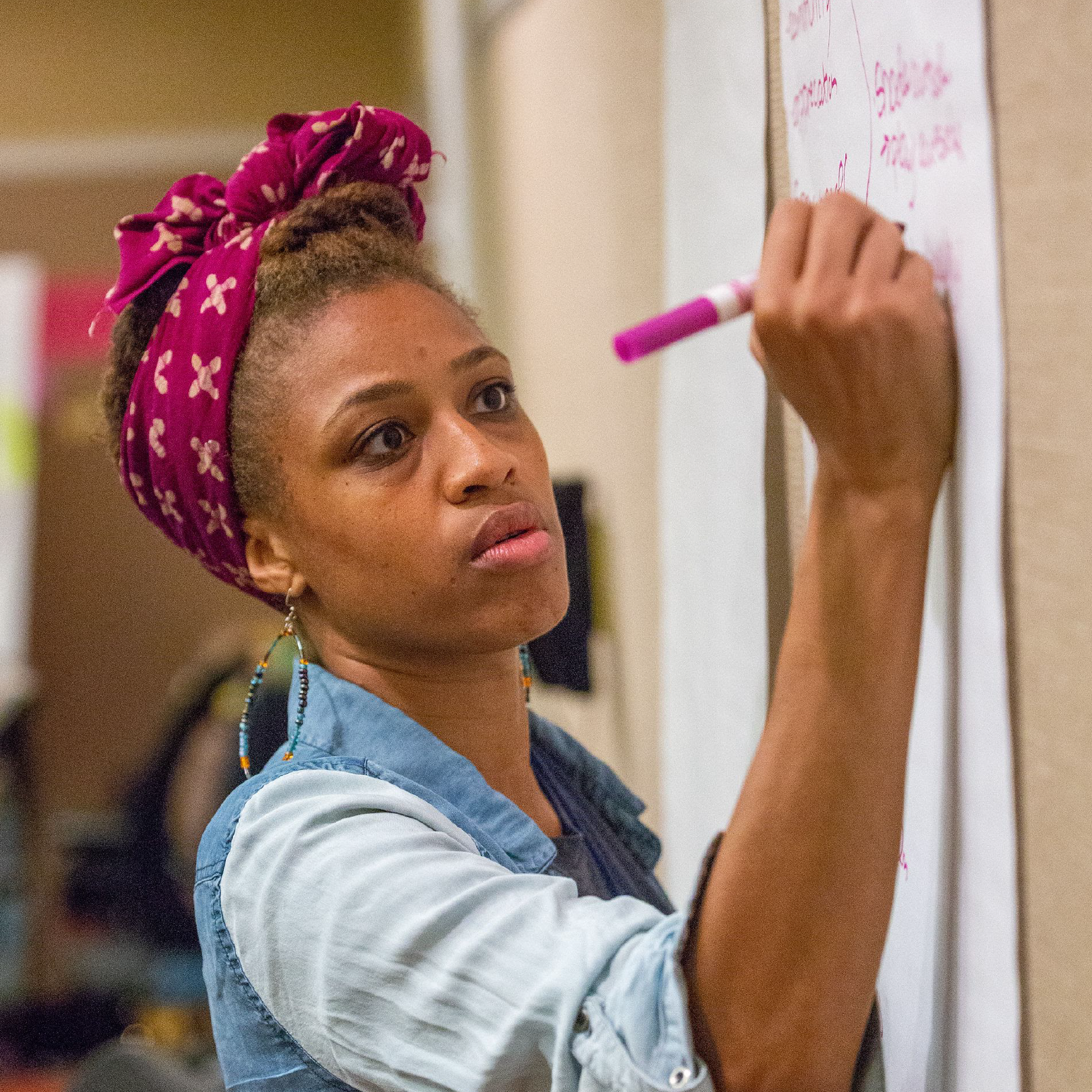How to build a pre-charge restorative justice diversion program that reduces youth criminalization while meeting the needs of people harmed.
The Restorative Justice Project at Equal Justice USA partners with communities across the nation to address harm through dialogue among those most impacted. We work to shift the paradigm from seeing crime as a violation of the law to understanding crime as harm that requires individual, interpersonal, community, and system-wide accountability and healing. Through our approach to restorative justice diversion (RJD), survivors have a voice in their healing process and young people are accountable for harm they’ve caused without being pushed into the juvenile legal system.
Our approach to restorative justice diversion has developed and evolved over decades with the primary aims of reducing the criminalization of BIPOC communities and orienting around people harmed, all while relying on the wisdom of families and communities to resolve conflict and harm. To that end, our model of RJD occurs at the pre-charge diversion point of the juvenile legal system. The other elements of our approach include relationship-building, preventing net-widening, being strengths-based, and protecting confidentiality.
We began scaling our successful RJD program approach to ten counties nationwide by providing extensive training, technical assistance, and thought partnership to local community-based organizations (CBOs) and county-level system partner. In response to the stream of new requests for support from prosecutors and CBOs, we launched this one-of-its kind interactive online toolkit so CBOs can begin starting RJD programs on their own. The toolkit provides our first phase of technical assistance and prepares sites to begin receiving restorative justice trainings. Once trained, sites are ready to launch their own diversion programs. This toolkit was primarily created for community-based organizations interested in starting a restorative justice diversion program for youth in their county. Potential juvenile legal system partners can contribute by green-lighting, advocating, and opening doors for the program to succeed as CBOs must be the ones to lead the implementation of a restorative justice diversion program.
Learn more about how to use this toolkit.

Starting this model of a restorative justice diversion program requires an understanding of youth criminalization in the US, an understanding of how the legal system impacts survivors, and of course, an understanding of the approach we are offering here. Step 1 introduces you to these concepts and recommends opportunities for deeper understanding through experiential learning such as trainings and workshops.



Step 1 helps you understand our approach to restorative justice diversion, its context, elements, and structure. Step 2 will help you determine if an RJD program is the right fit for your organization, engage the community to shape the program’s development, and build relationships with your local juvenile legal system towards receiving case referrals.

Once you’ve completed the necessary steps of the toolkit, you and your RJD program staff are ready to receive training! This step describes how to explore training opportunities and additional support from the Restorative Justice Project.
